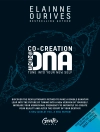This book addresses the current status, challenges and future directions of data-driven materials discovery and design. It presents the analysis and learning from data as a key theme in many science and cyber related applications. The challenging open questions as well as future directions in the application of data science to materials problems are sketched. Computational and experimental facilities today generate vast amounts of data at an unprecedented rate. The book gives guidance to discover new knowledge that enables materials innovation to address grand challenges in energy, environment and security, the clearer link needed between the data from these facilities and the theory and underlying science. The role of inference and optimization methods in distilling the data and constraining predictions using insights and results from theory is key to achieving the desired goals of real time analysis and feedback. Thus, the importance of this book lies in emphasizing that the full value of knowledge driven discovery using data can only be realized by integrating statistical and information sciences with materials science, which is increasingly dependent on high throughput and large scale computational and experimental data gathering efforts. This is especially the case as we enter a new era of big data in materials science with the planning of future experimental facilities such as the Linac Coherent Light Source at Stanford (LCLS-II), the European X-ray Free Electron Laser (EXFEL) and Ma RIE (Matter Radiation in Extremes), the signature concept facility from Los Alamos National Laboratory. These facilities are expected to generate hundreds of terabytes to several petabytes of in situ spatially and temporally resolved data per sample. The questions that then arise include how we can learn from the data to accelerate the processing and analysis of reconstructed microstructure, rapidly map spatially resolved properties from high throughput data, devise diagnostics for pattern detection, and guide experiments towards desired targeted properties. The authors are an interdisciplinary group of leading experts who bring the excitement of the nascent and rapidly emerging field of materials informatics to the reader.
Inhaltsverzeichnis
Part 1: Learning from Data in Material Science.- Designing Novel Multifunctional Materials via Inverse Optimization Techniques.- Quantifying Uncertainties in First Principles Alloy Thermodynamics.- Forward Modeling of Electron Scattering Modalities for Microstructure Quantification.- The Potential of Network Analysis Strategies to HEDM Data: Classification of Microstructures and Prediction of Incipient Failure.- Part 2: Data and Inference.- Challenges of Diagram extraction and Understanding.- Integration of Computational Reasoning, Machine Learning, and Crowdsourcing for Accelerating Materials Discovery.- Computational Creativity for Materials Science.- Optimal Experimental Design Based on Uncertainty Quantification.- Part 3: High-Throughput Calculations and Experiments Functionality-Driven Design and Discovery.- The Use of Proxies and Data for Guiding Materials Synthesis: Examples of Phosphors and Thermoelectrics.- Big Data from Experiments.- Data-Driven Approaches to Combinatorial Materials Science.- Invariant Representations for Robust Materials Prediction.- Part 4: Data Optimization/Challenges in Analysis of Data for Facilities.- The MGI Data Infrastructure.- Is Rigorous Automated Materials Design and Discovery Possible?.- Improve your Monte Carlo: Learn a Control Variate and Correct it with Stacking.- X-ray Free Electron Laser Studies of Shock-Driven Deformation and Phase Transitions.- Coherent Diffraction Imaging Techniques at 3rd and 4th Generation Light Sources.- 3D Data Challenges from X-ray Synchrotron Tomography.- Part 5: Interference/HPC/Software Integration.- Optimal Bayesian Experimental Design: Formulations and New Computational Strategies.- Optimal Bayesian Inference with Missing Data.- Applying an Experimental Design Loop to Shape Memory Alloys.- Big Data Need Big Theory Too.- Combining Experiments, Simulation and Machine Learning in a Single Materials Platform – A Materials Informatics Approach.- Rethinking the HPC Programming Environment.












